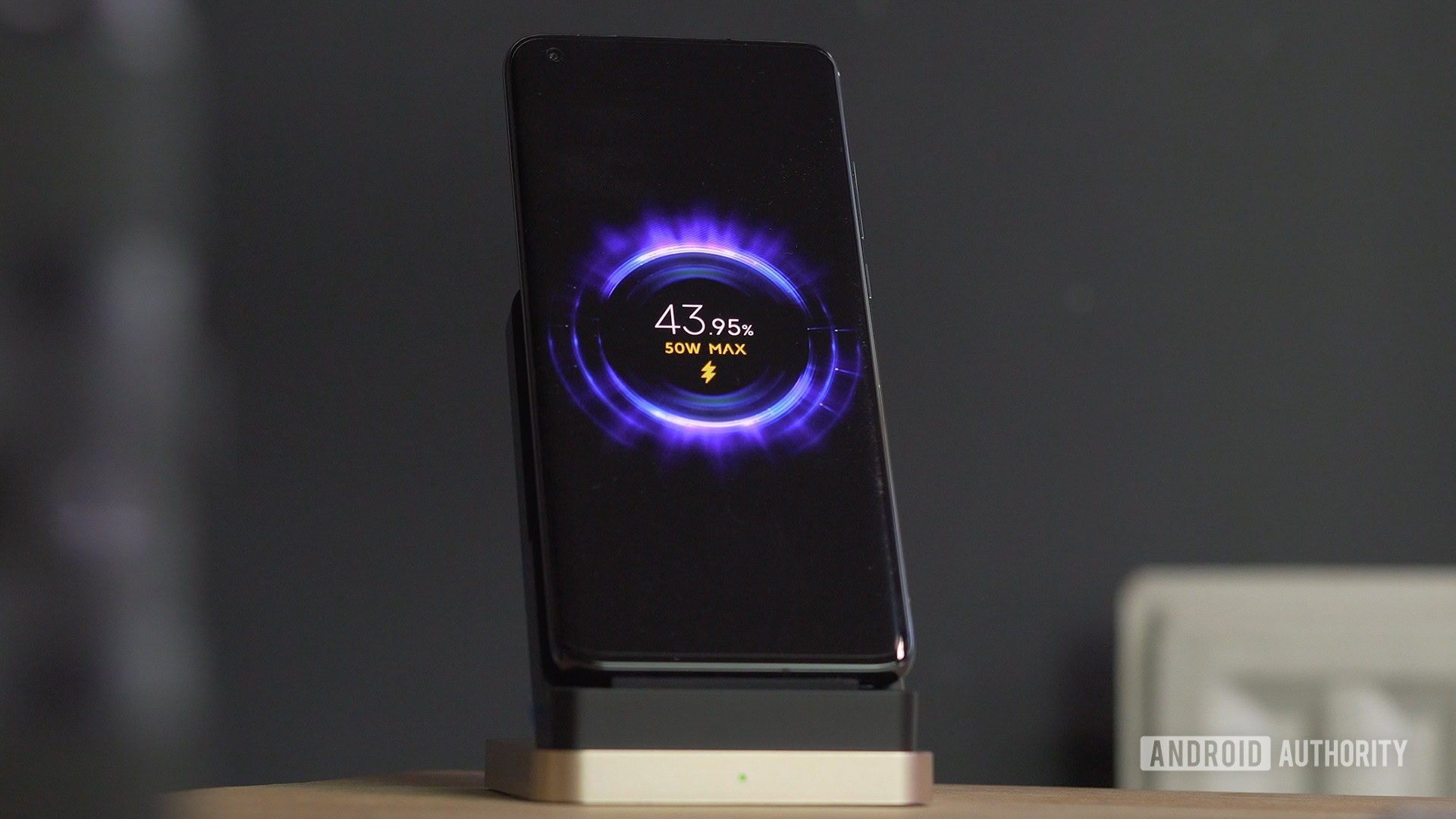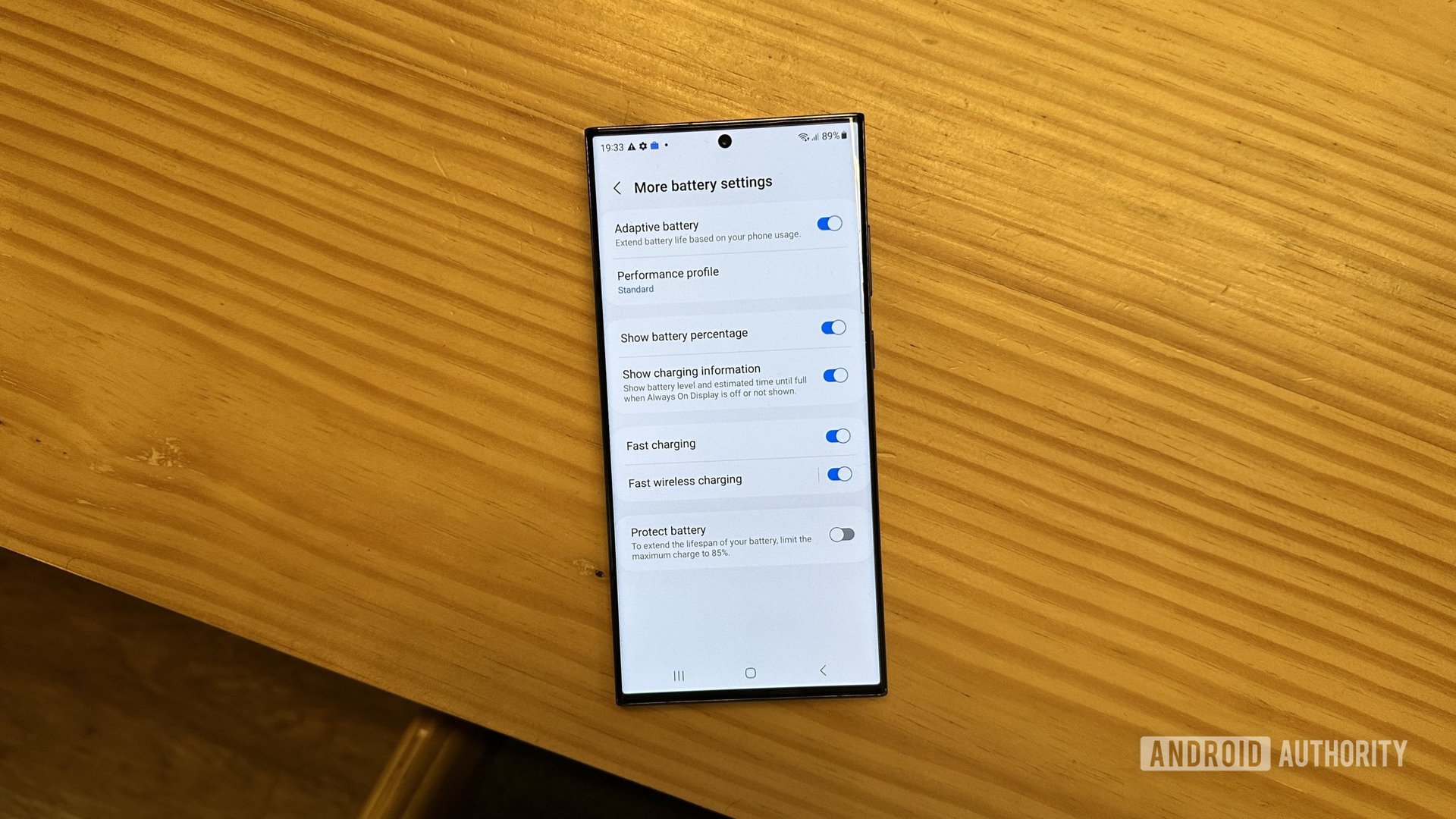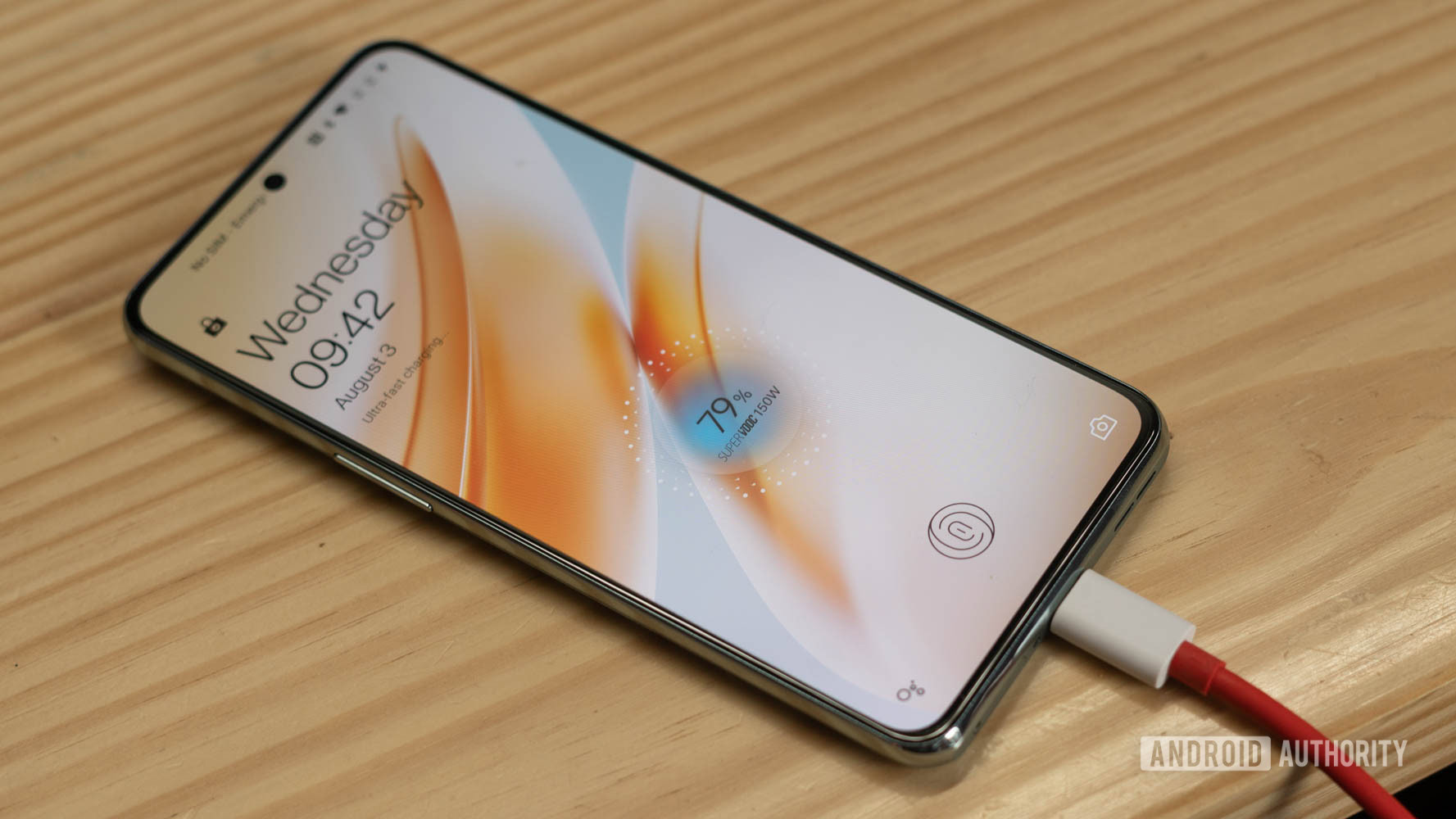Fast charging should be an option, and it’s time all OEMs gave it a toggle
Kris Carlon / Android Authority
Will fast charging kill my phone’s battery life? That’s a question that pops up every single time a smartphone manufacturer claims to deliver some form of fast charging. Would it heat up the phone too much? What kind of measures are in place to prevent battery degradation?
Still, there’s an undeniable benefit to the ludicrously fast charging pioneered by the likes of Xiaomi and OnePlus. If you’re in a rush to step out or running on a low battery ahead of a work call, a five-minute top-off gets you ready to roll. It’s something I think about every time I pick up my Google Pixel 7 Pro.
Hamstrung by the sluggishly slow 23W charging, the Pixel 7 Pro takes over two hours to fully charge. Compared to the ridiculous 100+ watts being touted by other phones, Google and, for that matter, Apple’s approach seems woefully inadequate.
Throttled charging speeds might elongate battery life, but I want more.
Now, I’m well aware of the fact that Google’s goal here is to reduce stress on the battery and allow your phone to deliver all-day longevity for years to come. But what if the perfect middle ground has always been staring at us? Why can’t I have a best-of-both-worlds situation where I can toggle on fast charging when I need it and fall back to the potentially better slow charging for overnight charging?
Would you like the option to slow charge your phone?
27 votes
Does fast charging truly degrade the battery?

Ryan-Thomas Shaw / Android Authority
The science and technology behind smartphone batteries haven’t changed all that much over the years. Futuristic innovations like graphene batteries are still a pipe dream and, at least for the moment, the chosen recourse to battery anxiety is to reduce the time taken to charge the phone.
Even the best studies haven’t found a direct correlation between fast charging and battery degradation.
As fast charging becomes a more prevalent technology, the myths about the potential effects of pumping your smartphone’s battery at even higher speeds are multiplying. Basic chemistry dictates that pumping high voltages at high temperatures should cause battery degradation. However, even the best fast charging-related studies haven’t found a definitive correlation between high-speed charging and a drop in longevity through severe degradation. Studies directed at extremely fast charging show that while there is an impact on cathode degradation after a few hundred cycles, this can largely be controlled by partial charging and constraining the upper cutoff voltage.
That said, even if there’s no empirical evidence to confirm that fast charging ruins battery life, the internet is full of anecdotal evidence to support that prognosis. In my own experience, older devices with not too fast charging, like my Pixel 3 XL, have fared much better in terms of all-day battery longevity compared to Dash Charging-enabled OnePlus devices of a similar vintage. Online forums, too, are flooded with users claiming that fast charging hurts long-term battery life. The bottom line is — there’s no definitive way to gauge how fast charging actually impacts battery life. Anecdotally, I’ve come across a fair number of users who opted for slower charging bricks that limit the charging speed of the phone.
Split battery designs and optimization curves help mitigate the effects of fast charging.
That said, most brands have found innovative solutions to the potential battery degradation problem. Today, most smartphones no longer ship with a single-cell battery; instead, it’s split into two parts. Both of these are pumped at sufficiently high-speeds to manage a balance between safety and convenience plus eye-catching numbers. Similarly, much of the charging circuitry has been moved out to the charger to keep the heat away from the phone.
Giving users the option: Fast charge or trickle charge

Dhruv Bhutani / Android Authority
Here’s a thought. A straightforward solution to balance the user-facing dilemma of high-speed charging and battery longevity could be to give users the choice to opt between the two options. Now, I’m not suggesting a complicated slider that would let you dial in the exact charging speed you want. Instead, an easy switch that toggles between standard USB-PD speeds and super fast charging would be a fantastic addition for users. In fact, I’d go as far as to suggest that the lower speed could be the default to err on the side of safety, with an opt-in option (maybe a pop-up?) to unlock maximum speeds when you need them.
Samsung and Xiaomi already let you toggle fast charging speeds. This needs to be standardized.
It’s not an unheard-of concept. Samsung phones today include a toggle that lets you opt into super-fast wired or wireless charging. Similarly, Xiaomi’s fastest charging phones include a toggle that lets you activate 120W boost charging or fall back to a more tempered charging speed.
Simply put, the technology to achieve the feature is already here. All it will take is a bit of concerted effort from Google to add such APIs to stock Android, which will let every Android manufacturer implement the feature without having to build it from scratch. If the payoff is more control for the end user and a better balance between convenience and battery longevity, it’s definitely something worth exploring. At least, it’d be an eco-conscious step for Android.
More choice is always better

Dhruv Bhutani / Android Authority
The beauty of the Android ecosystem is in the amount of choice it allows. That has been critical in allowing all the innovative fast-charging solutions that most OEMs are experimenting with. However, that choice should extend to being able to limit or control features that have the potential to affect the longevity of your device.
Android is all about choice, and this should extend to charging speeds.
Just like the choice between binned and full-resolution photos from a camera or adjusting the color profile of your phone’s display, it’s time for charging speed control to be a standard feature instead of the specialized addition offered by a few OEMs. Do you think fast charging is affecting the life of your phone? Would you prefer a toggle to control it? Let us know in the comments.
For all the latest Technology News Click Here
For the latest news and updates, follow us on Google News.
